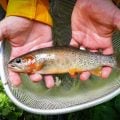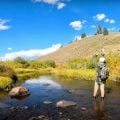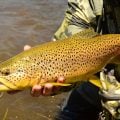Civilizing the Florida Keys
A PBS segment this evening points to the role of Flagler in “stitching” the last piece of the U.S. to the mainland in the first part of the last century. I say civilizing tongue in cheek, of course, because the Calusa indians had settled the keys long before European Americans got there.
In fact ‘Key West’ is an anglicanization of ‘Cayo Hueso,’ “Island of Bones” in Spanish, presumably because of the horrific battles fought there by the Calusa.
But my great- great-grandfather, who was mayor of Key West in the 1890s, wanted to raise a family, start a bank and open a candy store, while navigating the turmoil aroused by the movement for Cuban independence from Spain. He sent his family regularly to New York by steamship, to visit relatives who had immigrated from Catalonia, Spain. In those days, steamships were notoriously vulnerable to explosion but the only choice — which along with the advent of the automobile probably hastened Flagler’s venture.
Flagler completed the railroad link to Key West in 1912. The stock market crash of 1929 left Monroe county, Florida, broke, so there was no attempt made to create an “overseas highway” until 1934. In 1935, just before Labor Day, there was word of a powerful storm in the Atlantic that might raise sea levels 7-10 feet. The result of that category 5 hurricane was a 20-foot wall of water that killed 50% of the population of the middle keys, many of them World War I veterans who were participating the government’s work program, none of whom had access to the news until it was too late. The final move to transform the railroad into a highway began in 1936, surely as a response to the hurricane, which had destroyed the Key West link.
I remember clearly my first trip to Key West in 1979, riding a motorcyle across the old Flagler railroad, a road that purloined the original railroad tracks for guardrails. Now some 42,000 cars travel the new Overseas Highway, built next to or in place of the old railroad bed, each day.
But the truly remarkable thing to me is this: despite all the attention to the highway and the beach-bejewelled Keys (hint: beaches iin the Keys are diminished by the presence of a coral reef), despite the crass commercialism and the Hemingway worship and the arrival of cruise ship culture, the water surrounding the Keys remained — and still remains, thanks to the U.S. Fish and Wildlife Service and some careful individuals — a wilderness.
If you haven’t been there, go. And if you have a chance to stop at Bahia Honda and walk out over the old highway that tops Flagler’s original trestle and ends suddenly a hundred feet above the channel, you’ll get some sense of the history, guaranteed.
Better yet, wade out from Long Key and stand where Joe Brooks wondered about the possibility of catching his first bonefish on a fly.
(If you care to read a little more about the the role of the Keys in the development of saltwater fly fishing, Dr. Andrew N. Herd has a fairly detailed article here.)
Trout Town USA
Umpqua Oral History











